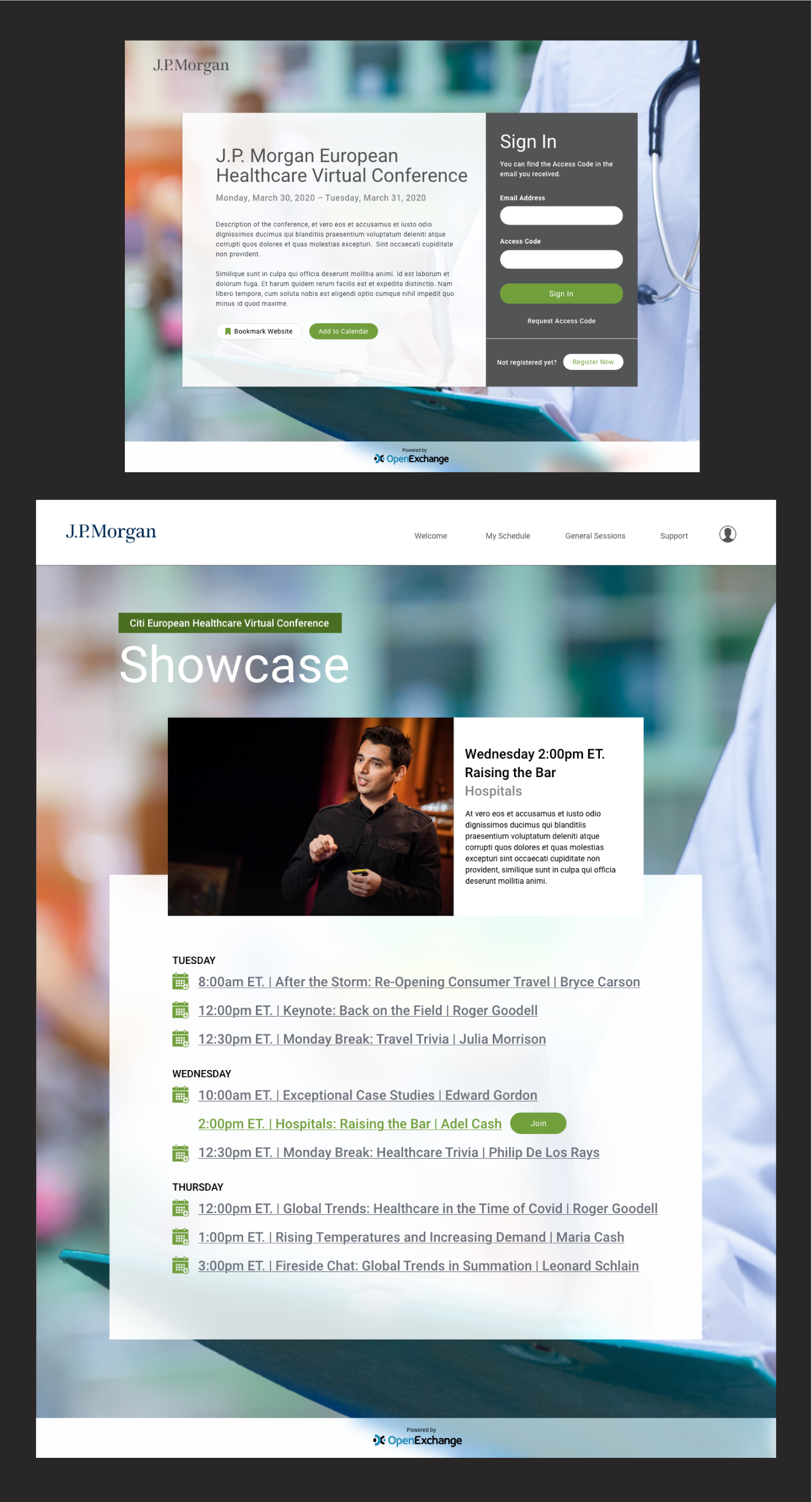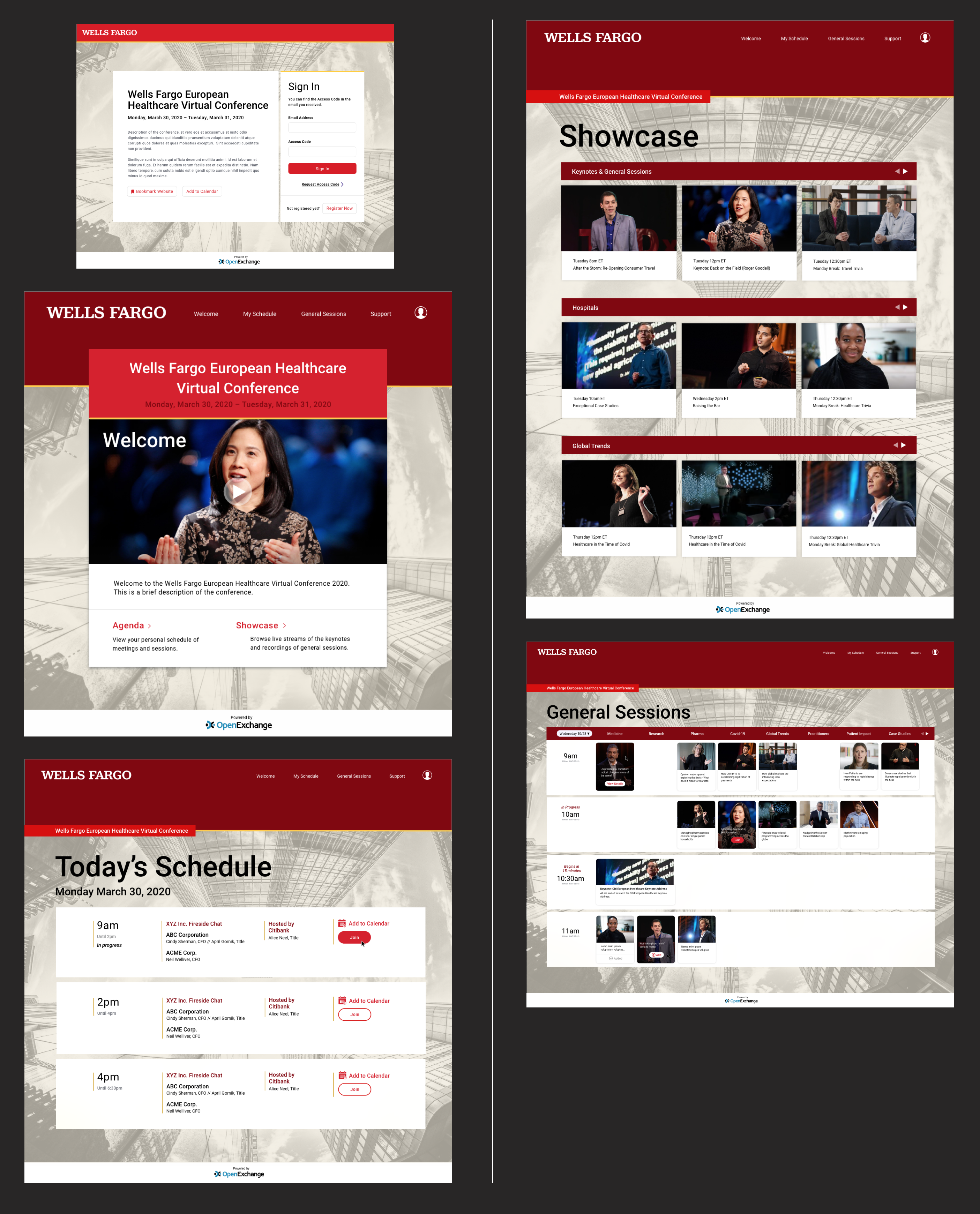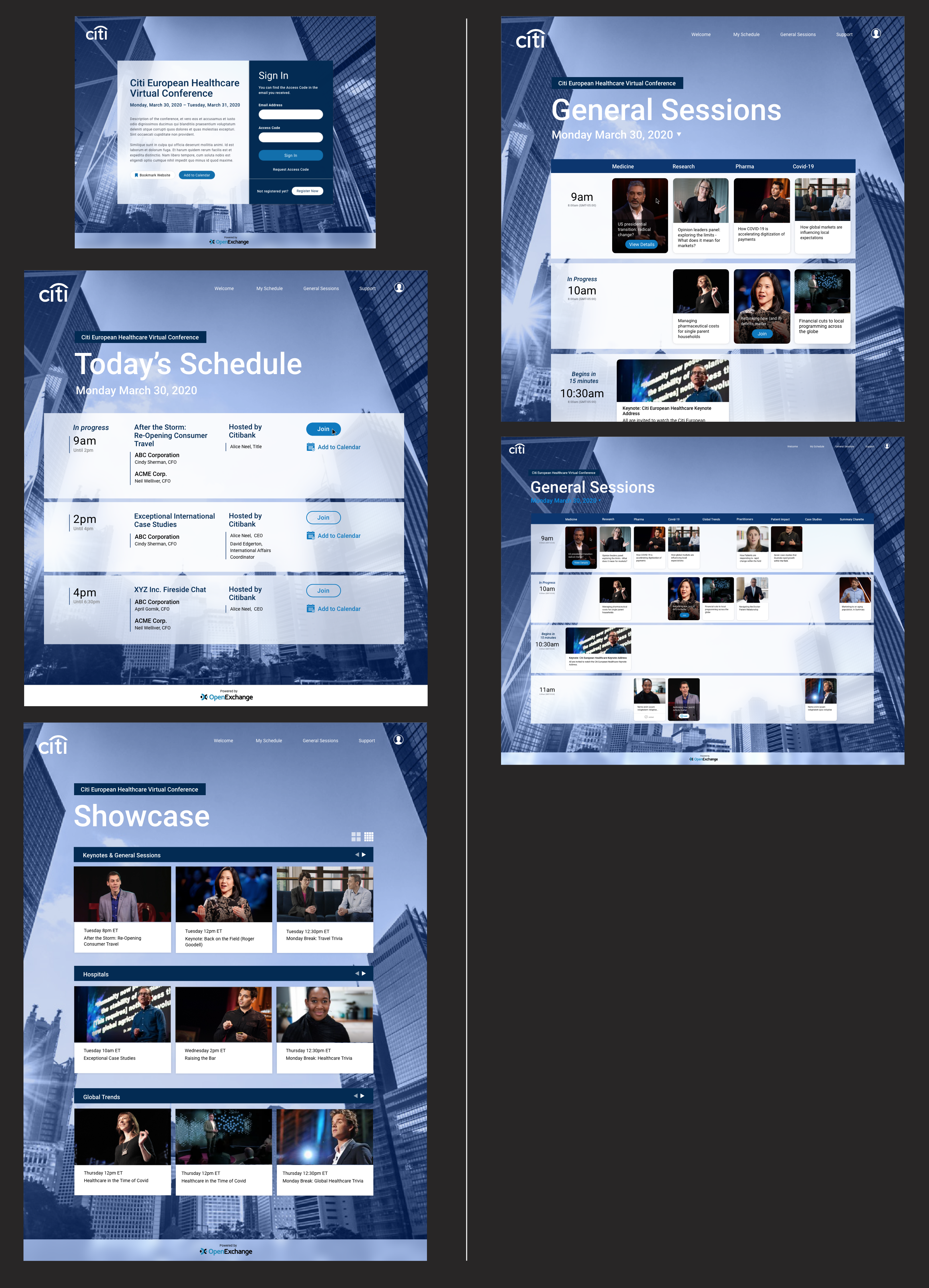Open Exchange
—
Template Design for Scalable Financial Conferencing Platform
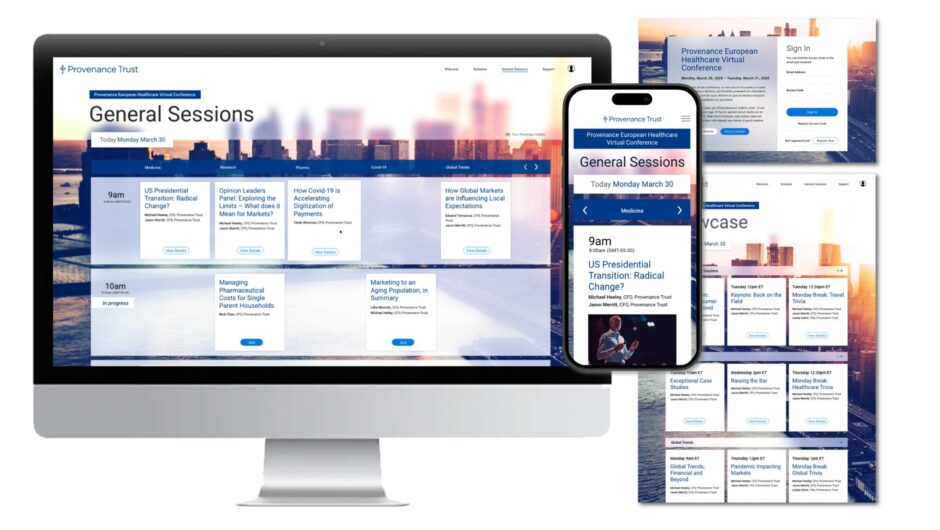
OpenExchange — UX/UI Design for Scalable Financial Conferencing Platform
OpenExchange is a leading web conferencing platform serving the financial services and investor relations industries, hosting multi-day and multi-week events for global institutions, public companies, and investment firms.
The Ask:
I was brought in to lead the visual branding of OpenExchange’s newest conferencing platform—a front-end experience that needed to be both visually modern and highly adaptable. The goal was to create an accessible, customizable template system that could flexibly accommodate corporate branding (e.g., Citibank, Wells Fargo), while maintaining a cohesive user experience.
The Challenge:
Financial conferences on OE often span several weeks and feature complex schedules, dozens of sessions, and numerous speakers across varied topics. This required an intuitive system for navigating dense, dynamic content—balancing structure with flexibility. Visually, the platform needed to support a wide range of brand assets (logos, color palettes) without compromising readability or accessibility. Color contrast and typography were optimized to meet WCAG AAA standards.
The Solution:
I designed a modular, brand-agnostic template system that preserves core UX architecture while allowing for seamless visual customization. Client branding (colors, logos, imagery) can be easily swapped in without disrupting usability or visual harmony. The design system was tested and successfully implemented for multiple clients, proving its durability and flexibility across diverse use cases.
This work modernized the OE interface, enhanced accessibility, and streamlined the process of delivering branded digital events at scale.
You can view my previous post, Open Exchange to get a sense of the baseline that I was designing from and improving upon.
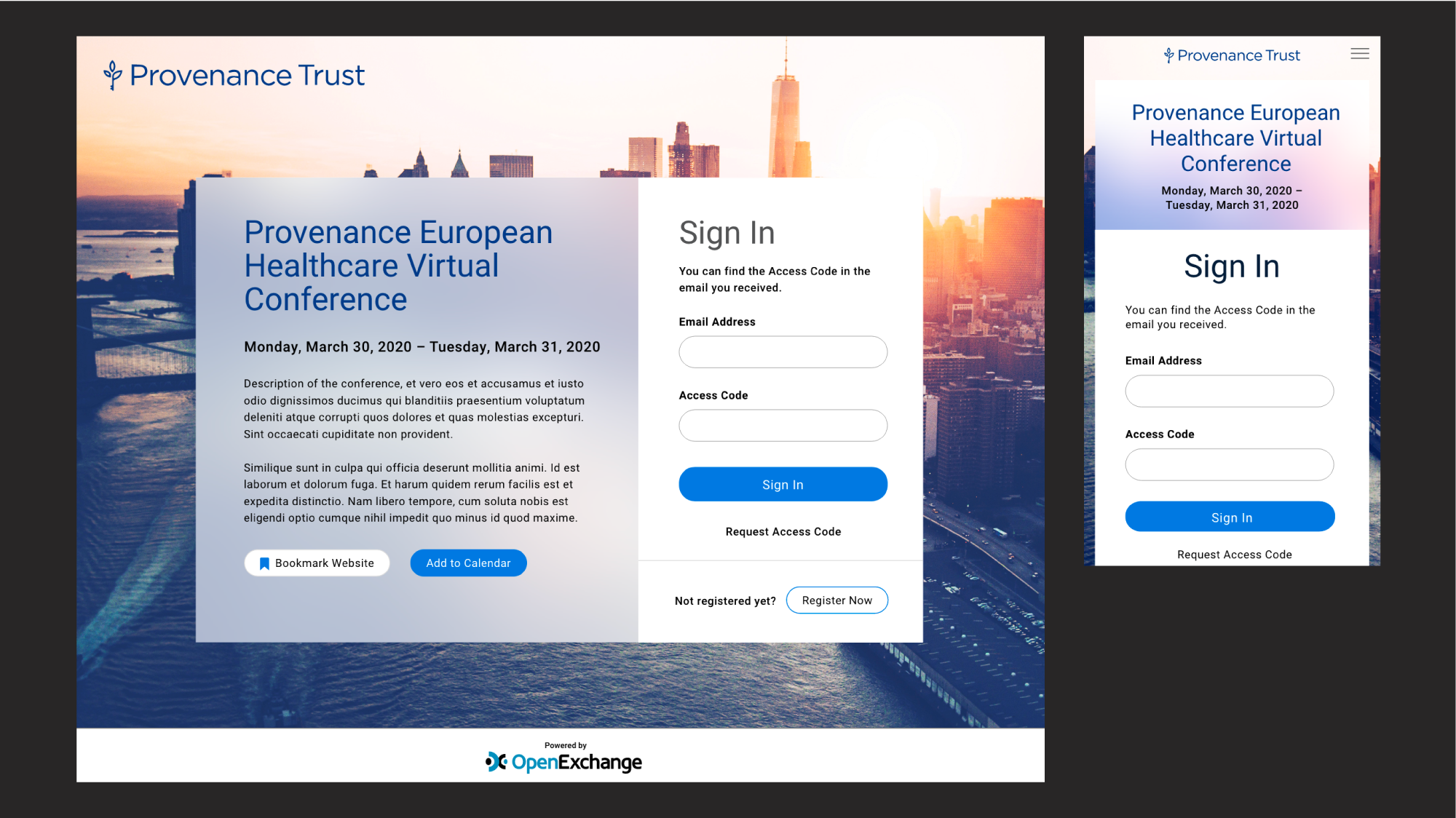
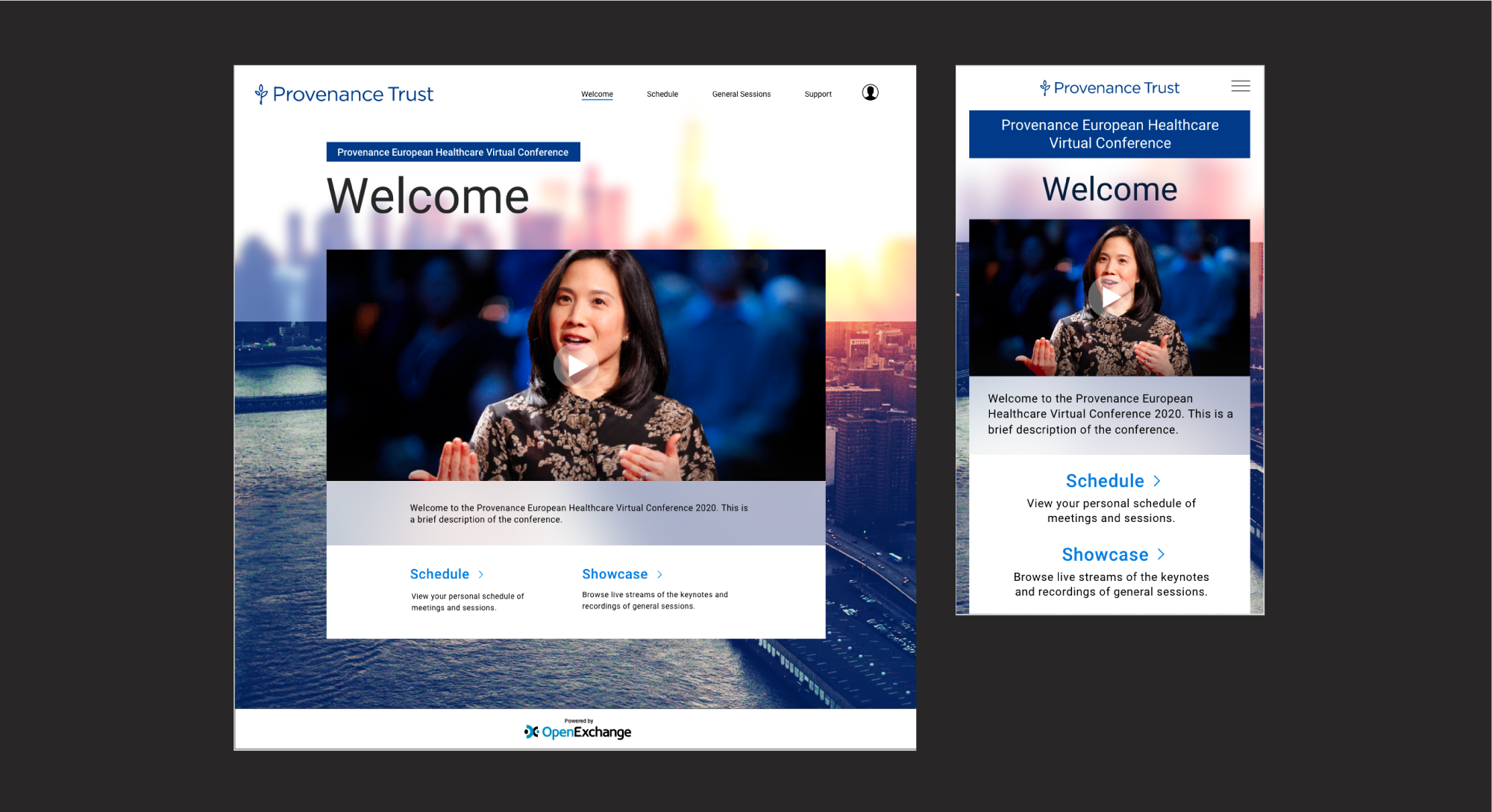
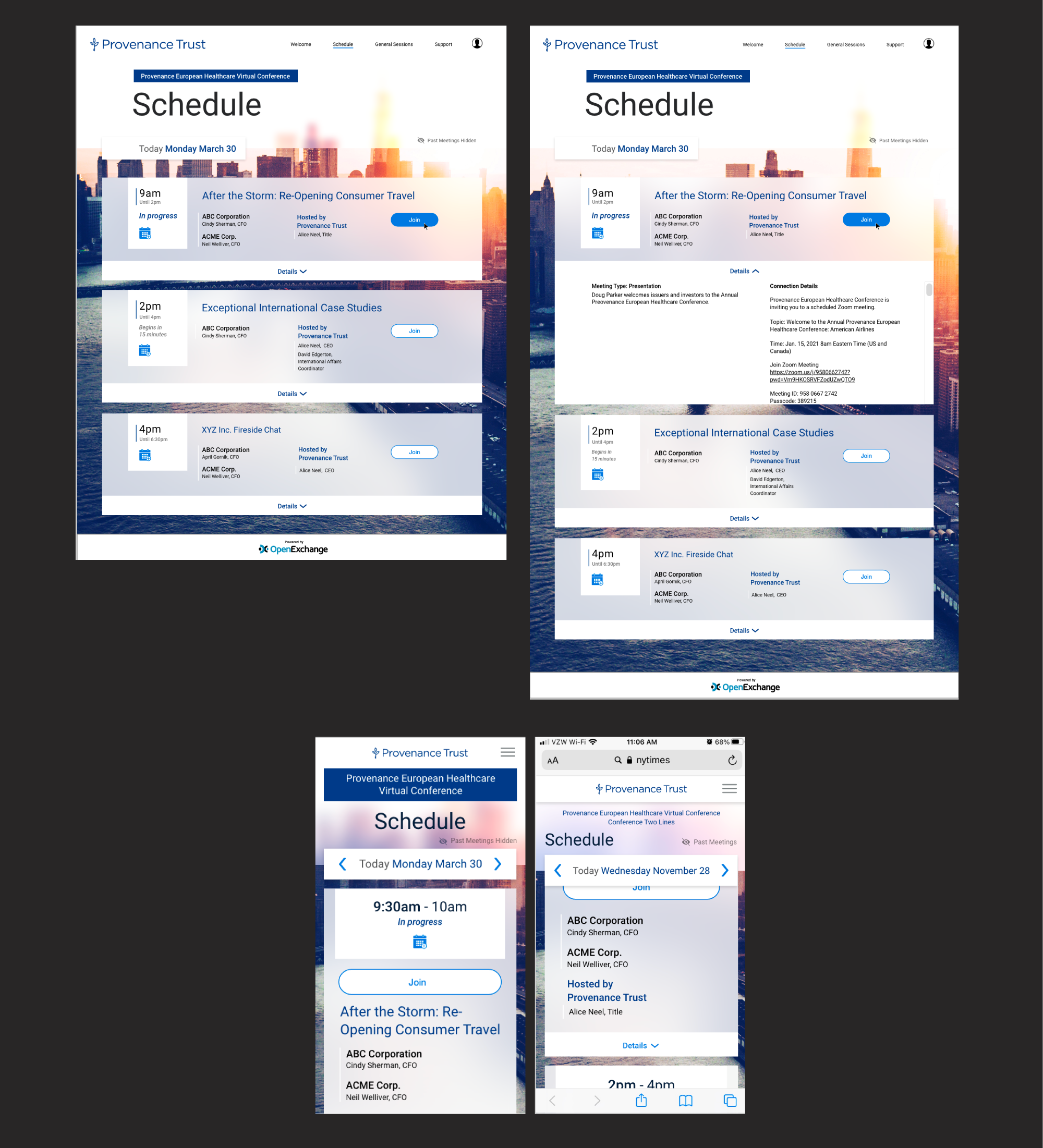
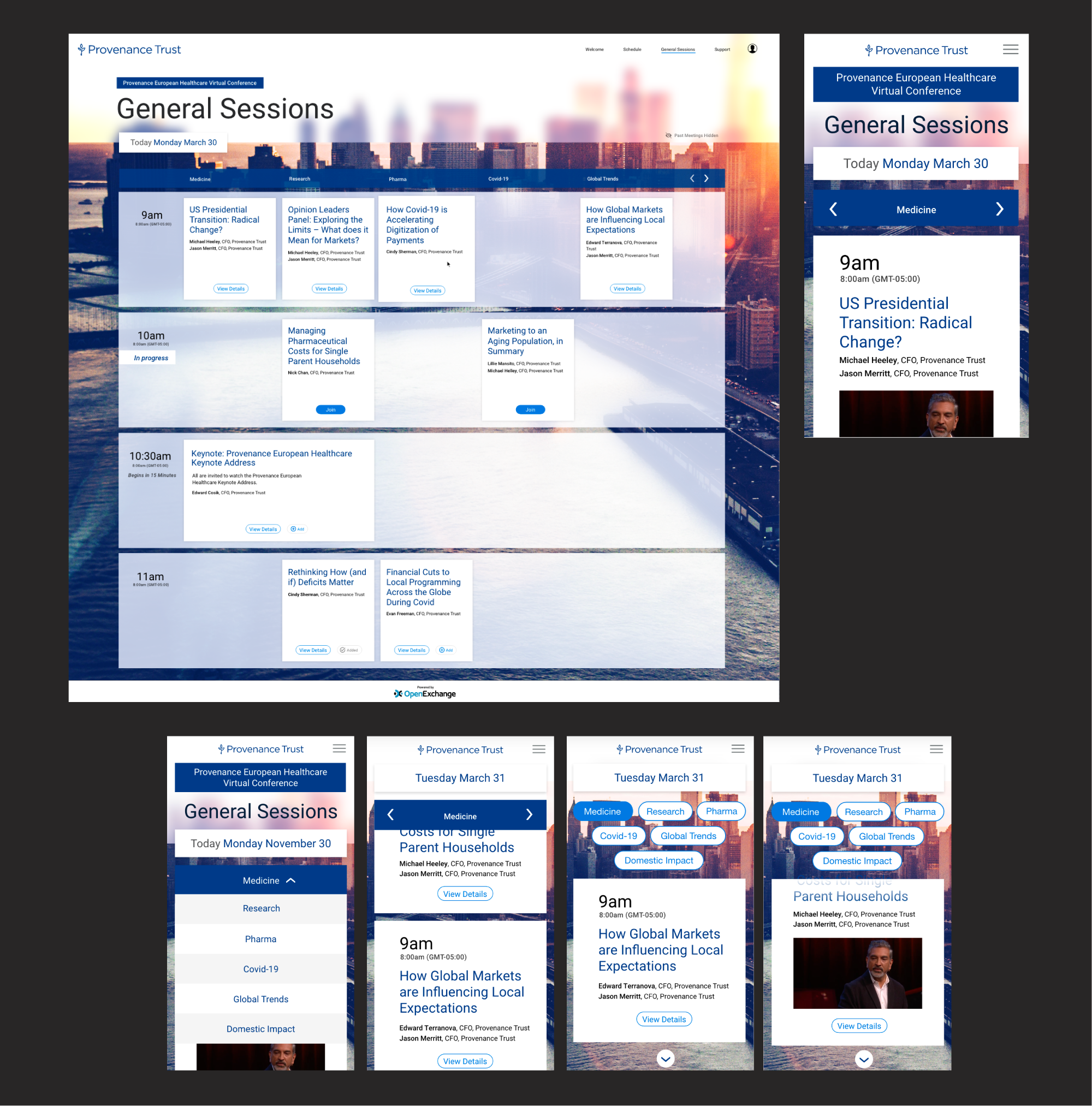
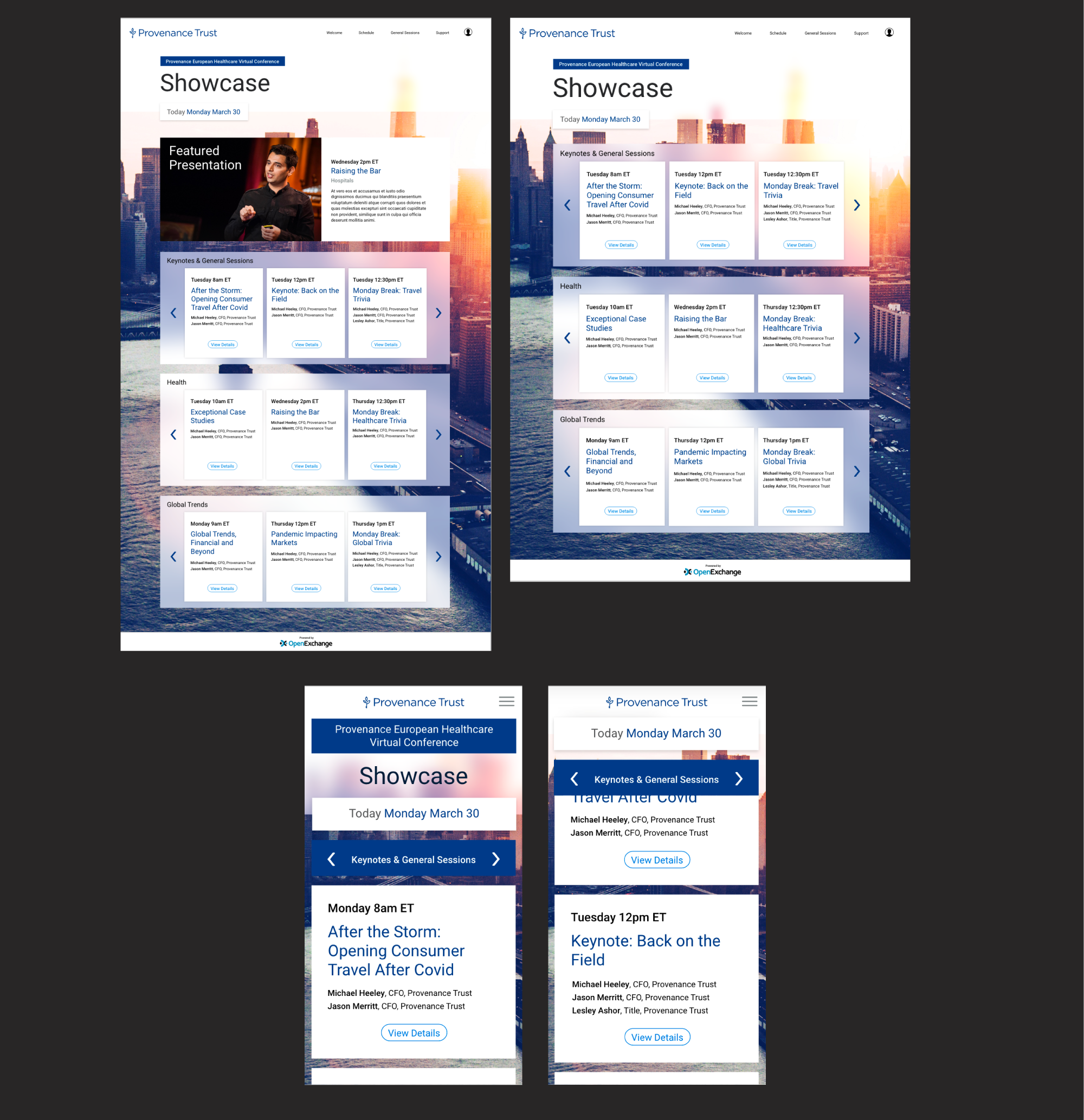
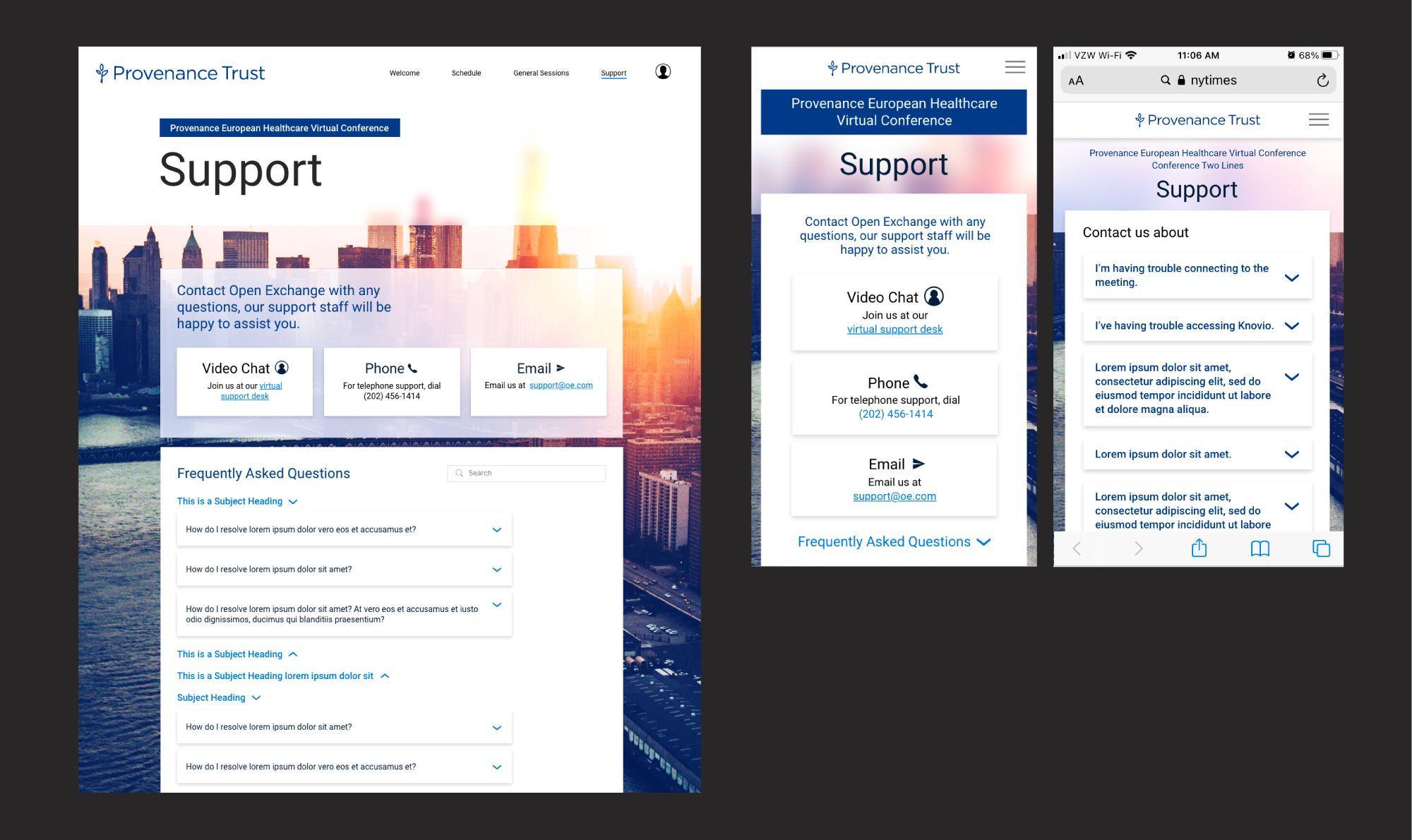
The following demonstrates the template in action, with examples of corporate branding plugged in. These templates were not actually used for conferences, they are intended to test the adaptability of the designs. In some instances I’ve experimented with different formatting, as a client might come up us with a specific request for content and styling.
